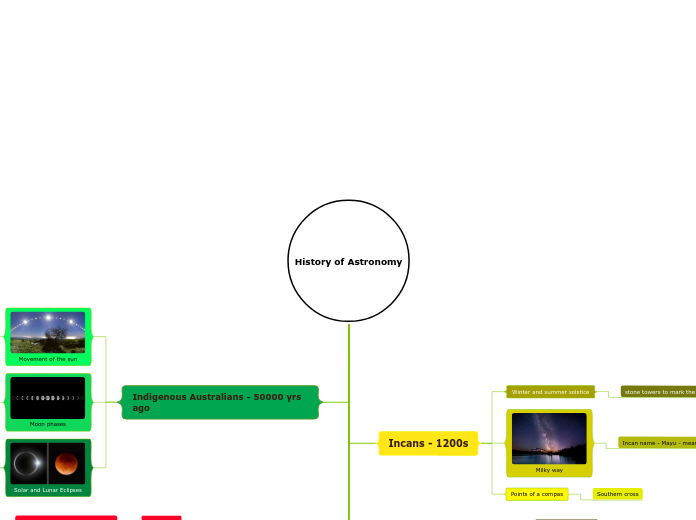History of Astronomy
Incans - 1200s
Winter and summer solstice
stone towers to mark the points of sunrise and sunset

Milky way
Incan name - Mayu - meaning river
Points of a compas
Southern cross
Indigenous Australians - 50000 yrs ago

Movement of the sun
Sun Woman moves across the sky

Moon phases
Fat man killed by his wives and rises from the dead.

Solar and Lunar Eclipses
Sum Woman and Fat Man embrace - Solar eclipse
Fat Man runs from Sun woman - Lunar Eclipse
Ancient Greek
Astronomy
Greek meaning for Law and Order
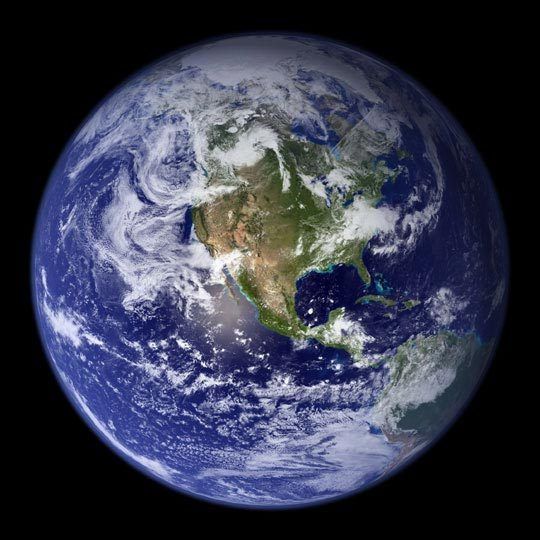
Earth was spherical
Sun and moon revolved around the earth
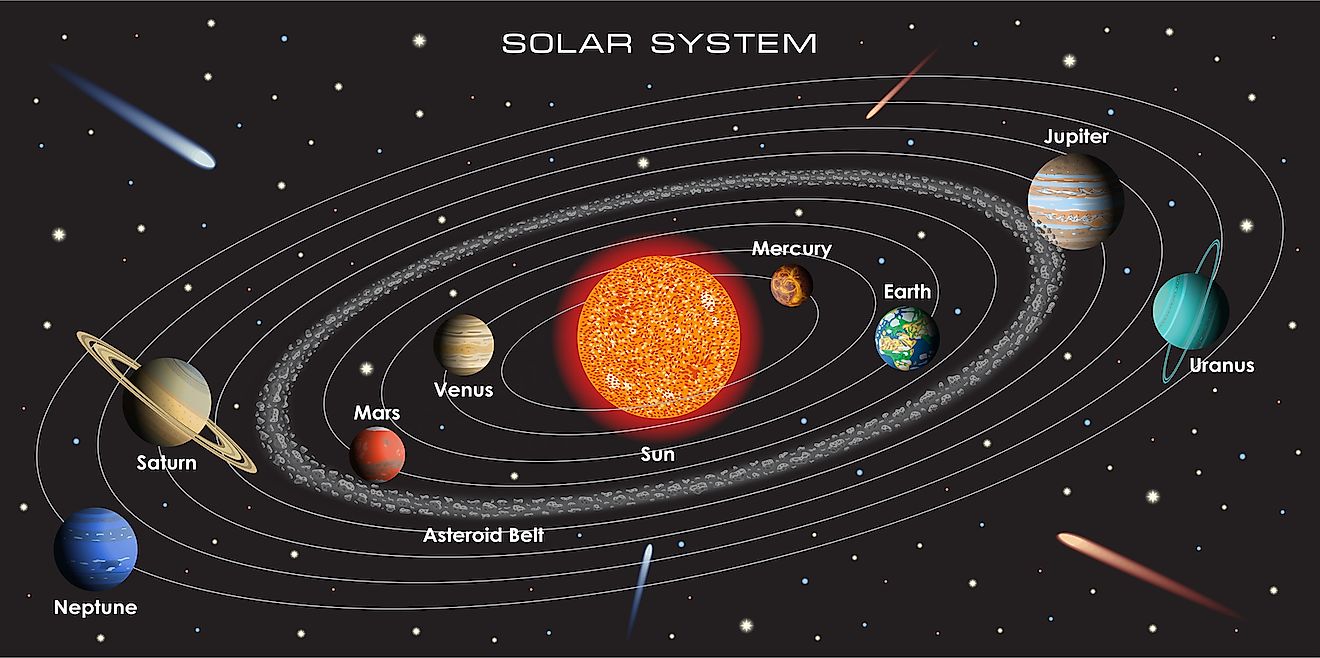
Sun was centre of the universe
Used 2000 years later
Early Middle Eastern
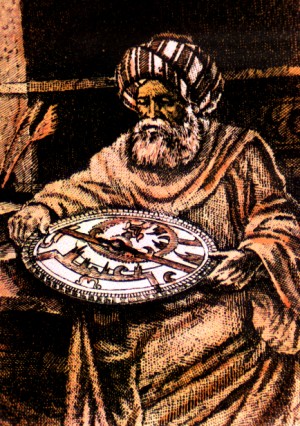
Al-Battani
trigonometry to analyse the ecliptic plane
length of the year as 365 days, 5 hours, 48 minutes and 24 seconds
accurately calculated the angle of the Earth’s tilt using the plane of the ecliptic
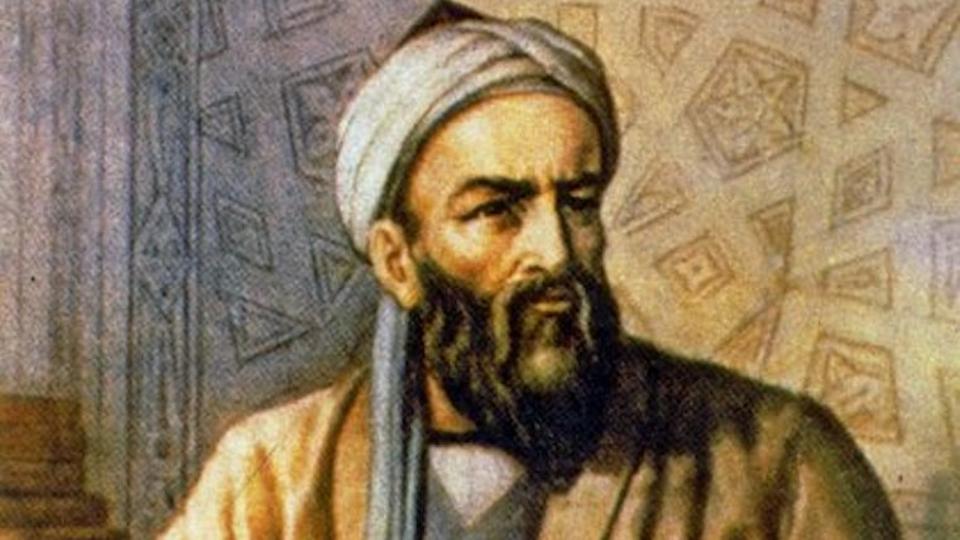
Al-Biruni - 600 yrs before Galileo
Earth rotated on its axis
Earth moves around the sun over the course of a year
sun never sets in the North or South Pole
Omar Khayyam
lunar year of 354 days
Jalali calendar
begins each year on 21 March
an error of one day in 3770 years
Renaissance - 1400s to the middle 1600s
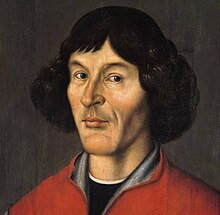
Nicolaus Copernicus
greater the radius of a planet’s orbit, the longer it took for the planet to orbit around the sun
no more accurate in predicting the position of planets than Ptolemy’s model

Johannes Kepler
motion of planets as ellipses
speed of an orbiting planet depends on its position in the elliptical orbit
planets more distant from the sun take longer to orbit the sun

Galileo Galilei
Telescope
moons of Jupiter
four moons are known as the satellites Io, Europa, Ganymede and Callisto
Earth was clearly seen not to be at the centre of all planetary motion
He observed the moon and described the lunar surface as uneven, with craters and mountains
his observational, experimental and theoretical work provided the evidence that eventually led to rejection of the Aristotelian–Ptolemaic geocentric model of the universe.
NASA - 1962-2012
Mariner 2
Fly-by of Venus
Venus has an atmosphere containing mainly carbon dioxide
Venus rotates in the opposite direction to most of the other planets in our solar system
Venus has no detectable magnetic field
Venus has an extremely hot surface, over 425 °C
Mariner 4

Fly-by of Mars
First close-up photographs of another planet
The pictures, played back from a small video recorder, showed lunar type impact craters
Mariner 10
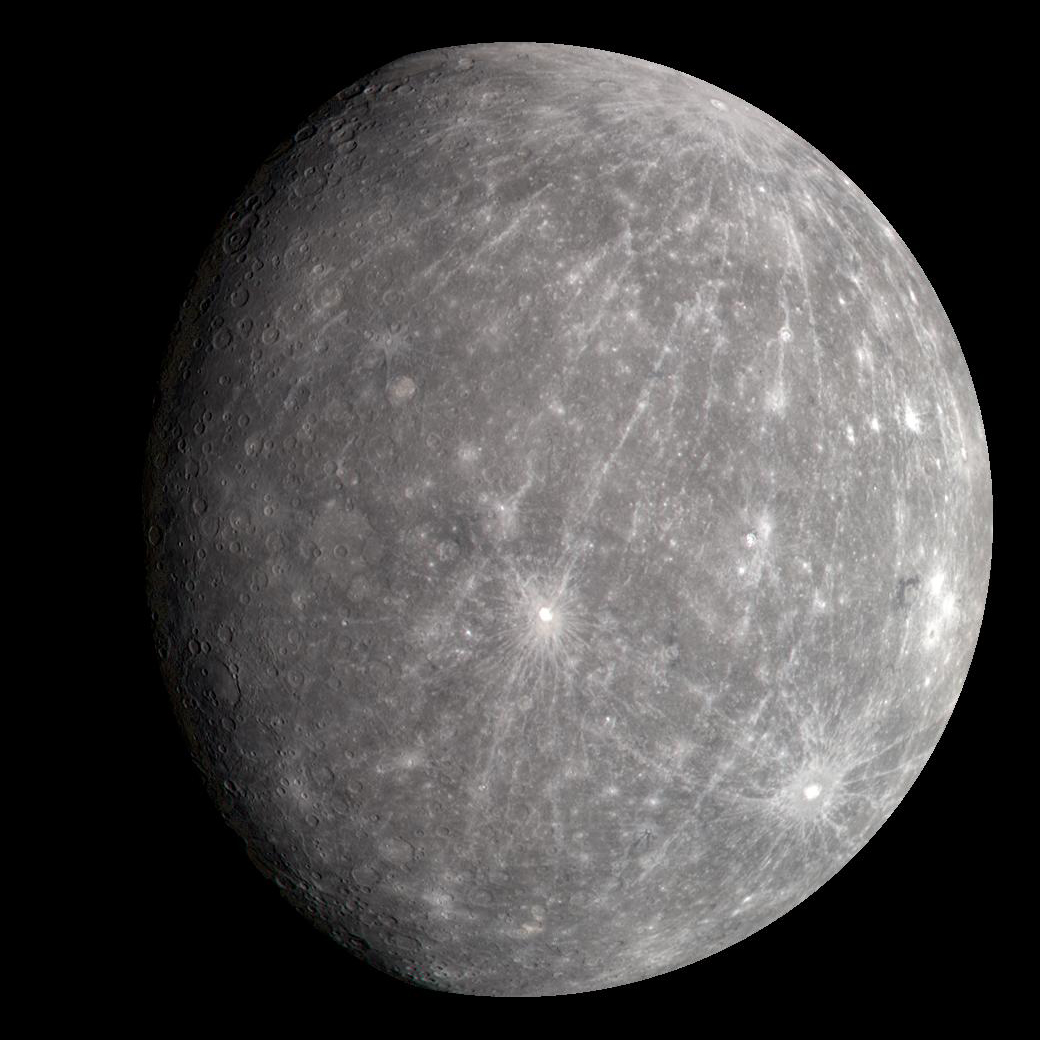
Mission to Mercury
Mercury has a thin atmosphere with traces of the gases helium and hydrogen and even smaller amounts of several other gases
Viking 1 and 2

Mission to Mars
Ice caps at the poles
Made of frozen carbon dioxide and frozen water
Large Volcanoes
Dried-up riverbeds
Formed by water
May still be frozen water beneath the surface
Found essential elements for life
Carbon, nitrogen, hydrogen, oxygen and phosphorus
Water vapour was found to be relatively abundant in the far north during the summer, with the north pole covered permanently in ice
Pathfinder

Mission to Mars
first wheeled vehicle to be used on another planet in the solar system
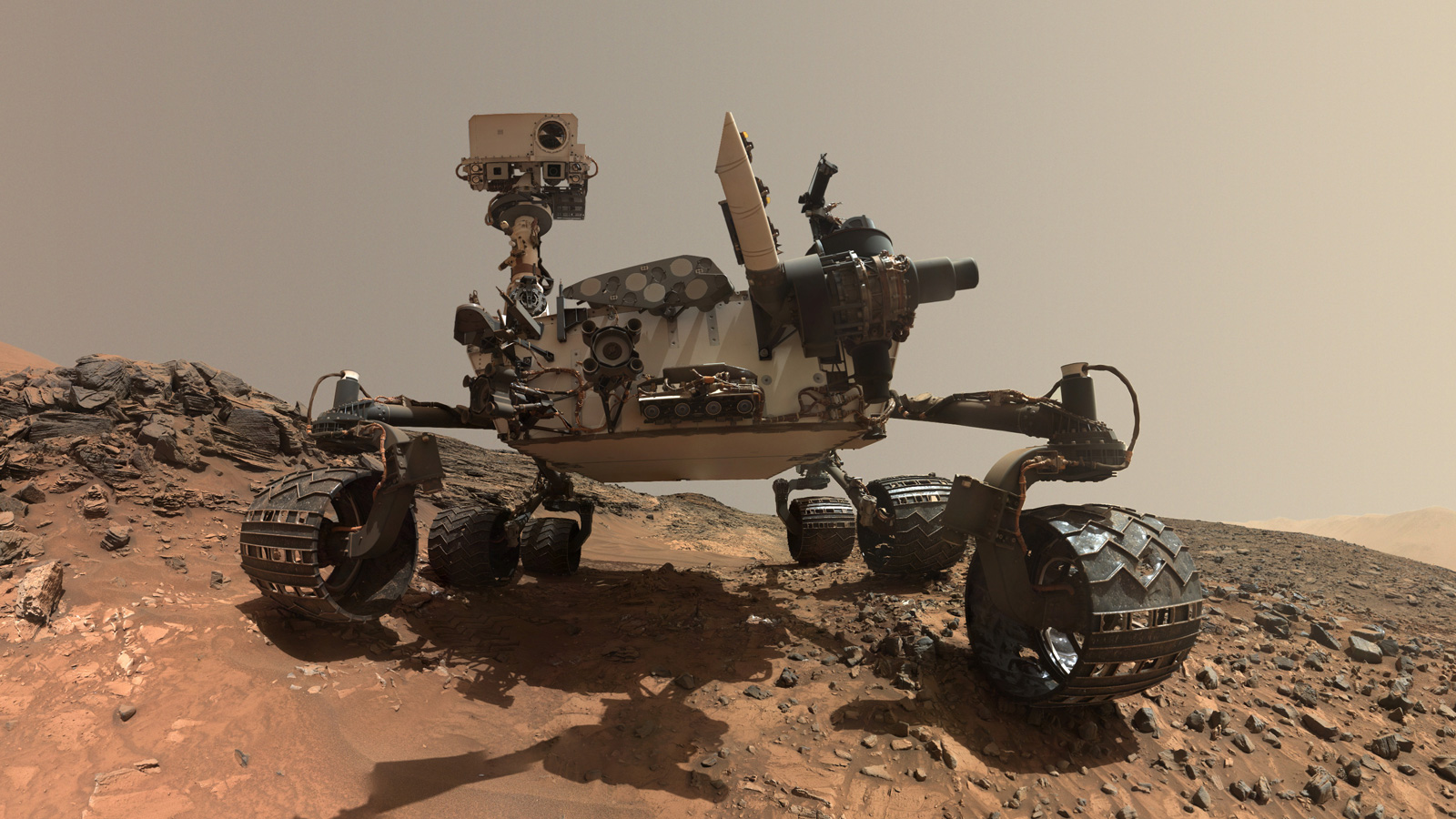
Curiosity

Mission to Mars
Most technologically advanced rover ever built
Ancient Mars had the right chemistry to support living microbes
Organic matter was present on ancient Mars and has even survived intact to this day
Gale Crater was capable of supporting life 3.5 billion years ago
There are occasional spikes in methane gas that so far have no explanation
Curiosity found sulfur, nitrogen, oxygen, phosphorus and carbon, key ingredients necessary for life, in the powder sample drilled from the "Sheepbed" mudstone in Yellowknife Bay
Surface samples taken from mars show that the dirt there is very similar to that of earth
The dirt on Mars may be capable of sustaining plants
Curiosity witnessed and made measurements through a planetary-wide dust storm
There might be microbial life on Mars
Cruiosity found an ancient stream bed
Mars used to have flowing water on its surface
Mars may be more similar to earth than we thought
Voyager 2

Mission to all Gas Giants
All gas giants had ring systems
Discovered and photographed many of the gas giants’ moons
Most distant human-made object ever to have travelled from the Earth
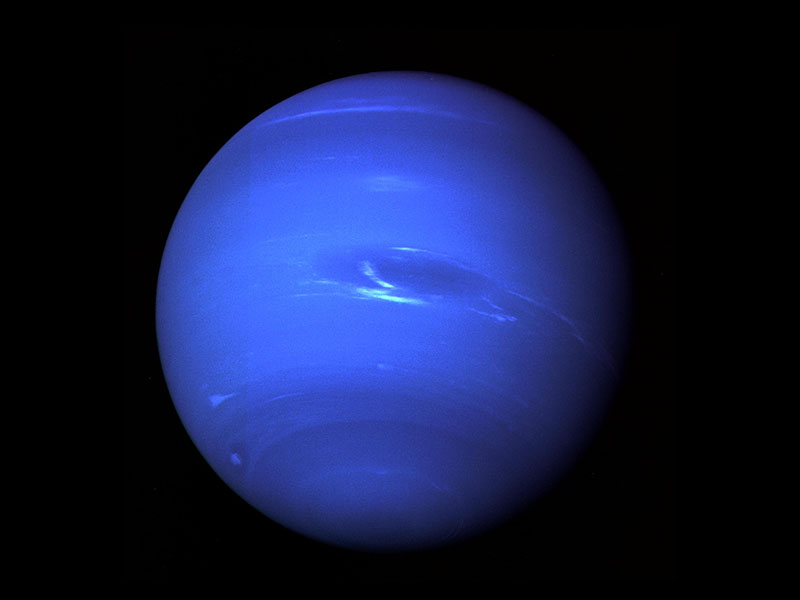
Neptune fly-by
Neptune has system of five faint rings that appear to consist of dust particles
Neptune has a Large dark spot, similar to Jupiter
Larger than Earth
Is a giant storm
Discovered six moons
One of the moons, Triton is the coldest known body in the solar system.
Galileo

Mission to Jupiter
Detailed information on the moons of Jupiter
Discovered evidence of salt water below the surface of the moons Europa, Ganymede and Callisto
New insights into the intensity of volcanic activity on the moon Io
Cassini Mission

Mission to Saturn
Landed a probe on Titan, Saturn’s largest moon, in 2005
Titan has an atmosphere, like that of Earth, contains both nitrogen and oxygen, but the oxygen is likely to be in the form of ice water
Atmosphere contains a mixture of complex organic molecules
